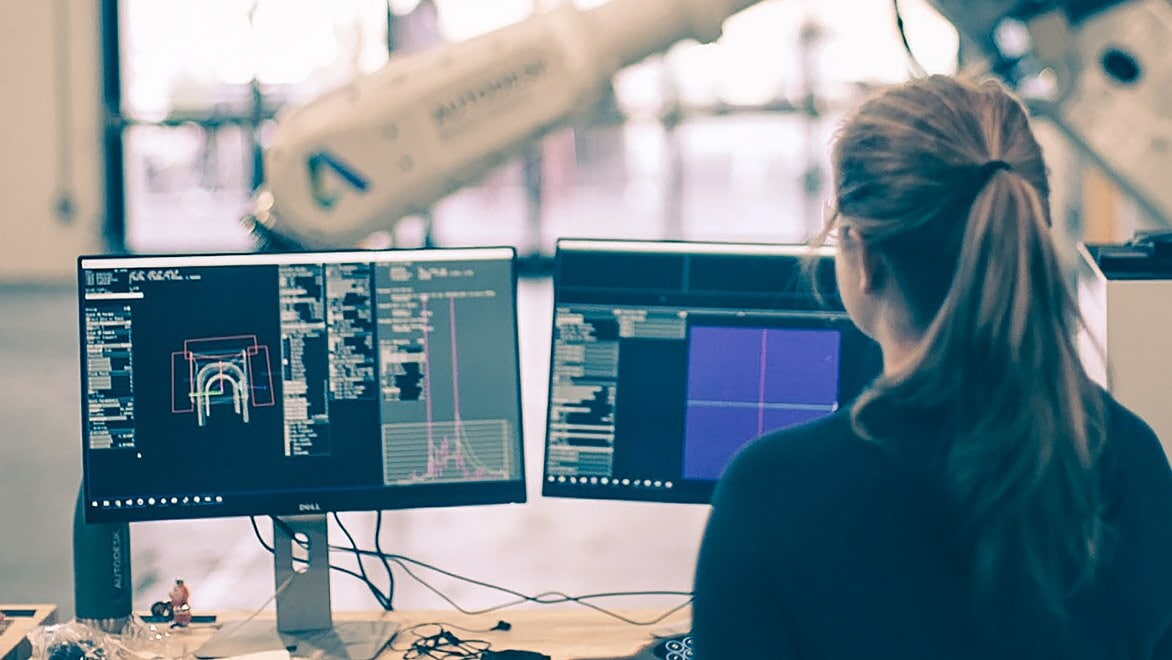COSM MEDICAL
Cosm Medical addresses the underserved and stigmatized problem of women’s pelvic floor disorders with its custom-scanned and 3D printed Gynethotics.
Cosm Medical addresses the underserved and stigmatized problem of women’s pelvic floor disorders with its custom-scanned and 3D printed Gynethotics.
Area of Research:
Medical Manufacturing, AI, Additive Manufacturing, On-Demand Manufacturing, Ultrasound Image Analysis
Location:
Toronto
Although it is an underserved and under researched problem, pelvic floor disorders in women are quite common, affecting about a third of women over 60 years of age and half of women over 80. The therapy for pelvic floor disorders is conservative and has scarcely evolved in the last 50 years. Prosthetics, known as pessaries, are worn internally to provide structural support. Although the devices come in dozens of shapes and sizes, the fitting process is done by trial and error and is often painful.
About 40% of patients stop using the device within the first two years, opting to either to live in pain or have surgery. However, the reoperation rate for surgeries on pelvic floor disorders is as high as 30% in five years. To address this very real problem, Cosm Medical is using a combination of ultrasound imaging, AI image analysis, and 3D printing to manufacture customized pessaries.
The Toronto-based startup developed a novel technique to scan and mold the female pelvic floor. An initial ultrasound takes baseline measurements, then a second scan utilizes specialized inflated balloons to measure and mold the vaginal cavity. Cosm has been awarded a US patent on the measurement technology and is pursuing multiple additional patents for its designs and process, including analyzing medical images to make custom vaginal therapeutic devices. The team is building an AI platform to automate the analysis of pelvic floor ultrasound images. After the initial analysis, those measurements go into an AI predictive model for designing the custom pessaries, called Gynethotics™. Clinicians can then edit or approve the designs before manufacturing. Manufacturing is done at a centralized location at a Cosm facility or a local contract manufacturer.
Cosm plans to create pessaries that are unique to each woman and use resulting data to continuously improve its predictive model. However, the company encountered issues with 3D printing biocompatible-grade soft materials to the necessary specs. Since joining the Autodesk Technology Centers Outsight Network, the team has been able to resolve that problem with the help of the Toronto Technology Center staff and some 3D printing manufacturers. The company made early successful silicone prototypes at the technology center in part by using Fusion 360 software for its predictive parametric models, but the organic nature of the geometries pushed the limits of the solid modeling space. From acquiring access to special equipment like pressure pots and silicone injection guns, to drop-in help sessions with Fusion 360, and support from technology center staff setting up processes unique to Cosm, the company estimates its participation in the network cut several months off of its R&D time.
Before going to market, Cosm is conducting two clinical studies. The first one is underway, testing the pelvic floor scanning and measurement system on dozens of women. From that group, a selection of women who use pessaries will participate in the second clinical study focused on the fitting and manufacturing of the Gynethotics. An estimated 40% of women who use pessaries don’t get fit properly, and over half cannot manage their own devices because they don’t have the ability to remove and reinsert them. The goal for these clinical studies is to improve the experience of each patient by giving them a custom fit and empowering them to self-manage their devices, which will improve quality of life while lowering risk of complications associated with pessariese.
Because Gynethotics are medical devices, they are subject to challenging regulatory clearances that could prevent Cosm from adopting advanced techniques such as generative design. However, the company remains interested in exploring how generative design could optimize its parametric design model for pessaries, that is, if it can work with the biomechanics of the pelvic floor force loads and the insertion and removal forces needed. Maximizing the optimization of its AI-assisted pelvic floor scanning and pessary design techniques will help Cosm achieve its goal of improving the lives of one million women with Gynethotics by 2030.

The residency program provides open workspaces and equipment for teams doing forward-looking work in the areas of construction, manufacturing, and emerging technologies.